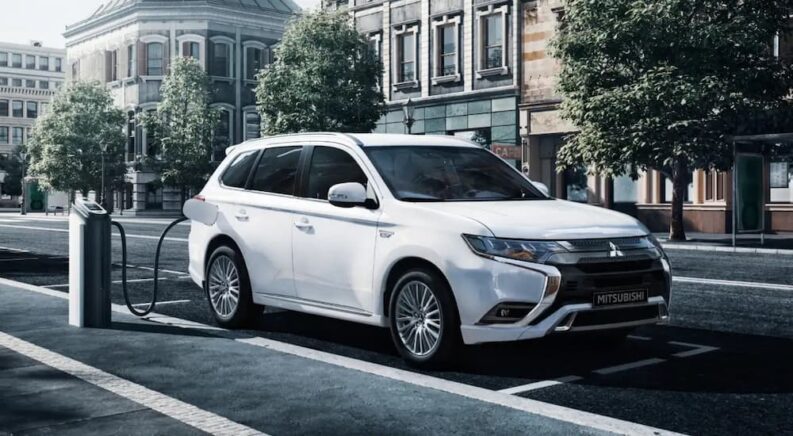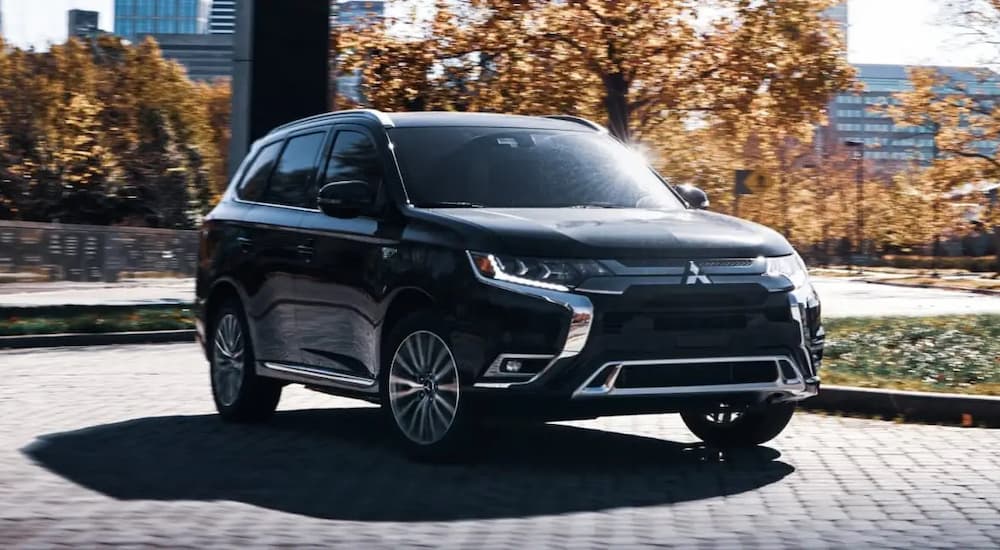If someone could predict the future of the auto industry with perfect accuracy, then they’d stand to make a generous fortune on the stock market. No one really has that kind of clairvoyance, however, and anyone who tells you they do is trying to sell you something or get you to subscribe to their podcast. I say this to make one thing very clear: I’m not some wizard here to tell you exactly what’s to come with plug-in hybrid electric vehicles (PHEVs). Instead, I’m going to do my best to look at what’s out there and make some educated guesses about what the future holds for these models.
All it takes is one look at the number of electric vehicles for sale right now in a variety of types, including both battery-electric vehicles (BEVs) and PHEVs, to see that things are certainly in a state of flux. The auto industry is changing––that’s one thing you can be certain of––and how it will all shake out should be entertaining, at least. It’s not just manufacturers in North America that are scrambling to keep up with what’s going on either; European and Asian car companies are also in the mix, looking to be the leader in the all-electric future.
What Is a PHEV?
There are no foolish questions, and there’s nothing wrong with not knowing what something is. Let’s start with some basics. A PHEV is, as the name suggests, a type of hybrid vehicle––meaning it has both a conventional gas-powered engine and a battery-powered electric motor—that can physically plug into a power outlet. These vehicles can be charged at your home using Level 1 or Level 2 charging options, and newer models like the Mitsubishi Outlander PHEV can utilize Level 3 DC Fast Charging for quick power-ups on the go.
The fact that they can plug in to be charged is important and sets them apart from other hybrids. This gives them a major advantage: PHEVs are able to travel relatively short distances using only the battery-powered motor without touching the gas tank. The total all-electric range from a full charge varies from one PHEV to another, but they’re typically good enough to let you run some quick errands or even make your daily commute if it’s a short distance. For example, the 2023 Outlander PHEV can go an estimated 61 km on a full charge without using any gas. These models can also qualify for government rebates since they are considered zero-emission vehicles.
How Does a PHEV Compare to Other Models?
I touched on this a little bit already, just talking about what PHEVs are, but let’s take a deeper look at the different types of vehicles out there right now and how they compare. This is important to understand to have a realistic sense of what PHEVs offer and what their future will probably be. So, let’s dig in real quick.
Internal-Combustion Engine Vehicles
These are the conventional vehicles we all grew up with, utilizing gas to fuel internal explosions that generate power. Modern models have impressive fuel economy but still require gas and create emissions that harm the environment. They tend to be loud and have a lot of moving parts that require a lot of service to maintain, but they’re a known factor that we’re all familiar with at this point.
Hybrid Vehicles
A standard hybrid adds an electric motor to go along with the conventional engine, which is powered by a separate battery. Traditional hybrids can’t be charged from an external source and instead use tools, such as regenerative braking technology, to keep the battery charged while you drive. A hybrid system can help boost fuel economy (by letting the motor take some of the load off the engine), vehicle performance (by adding the two outputs together), or both.
Plug-In Hybrid Electric Vehicles
As I said already, PHEVs are basically hybrids taken to the next level, giving you the ability to plug them into an outlet to charge the battery for the hybrid motor system. This increases fuel efficiency and power and gives you a limited all-electric range using only the battery and motor, not the gas-powered engine. They’re a sort of middle way between basic hybrids and fully electric models.
Battery-Electric Vehicles
BEVs leave the gas-powered engine behind completely and rely solely on batteries that power one or more motors to propel them. There’s no need for gas since they’re charged from external sources, and they produce zero emissions when you drive. As technology has improved, the performance of BEVs has become exceptional since they provide instant torque and can offer remarkable acceleration and speed when you’re on the road.
Advantages and Drawbacks of PHEVs
Where do PHEVs fit into this big picture? They’re a great option for drivers who are interested in getting a feel for how well a BEV might work for them but who don’t want to fully commit to owning one just yet. Let’s say you like the idea of a BEV and being able to charge it at home overnight, but you’re not sure how well you’ll actually be able to do that with your current housing situation. A PHEV lets you test things out and see how it would work, giving you an all-electric range that might cover most of your driving needs, but you still have the gas tank to rely on if that’s what’s best for you.
One flaw with PHEVs right now is that they’re a middle-ground option between the cars we’ve all known for the last century and the future of the auto industry. There’s no doubt that BEVs are where things are headed, and the infrastructure is growing throughout the country to meet the needs of more BEV drivers. This also comes in handy for anyone with a PHEV since it creates more ways to charge them on the go, but hybrids are still just a stepping stone from gas-powered to all-electric. Plus, while PHEVs have the best of both worlds, they also have the worst––you have to worry about conventional engine maintenance and service, plus the battery and motor for the hybrid system.
What’s the Future of PHEVs?
At the moment, PHEVs have some great advantages that make them a terrific choice for a lot of drivers. As I said, they’re perfect for someone looking to test the waters, so to speak, with what an EV has to offer for them—but if you find that a BEV would be a great fit for you, then you’re still stuck with something that has limited all-electric range. If you’re on a two-year lease, then that’s not a problem, but if you bought a PHEV and discover you’d prefer a BEV, then you have a bit of a headache to deal with. It’s not a massive problem, but it’s something every driver should keep in mind.
It’s like getting an order of French fries and realizing halfway through that you really just want a big dish of poutine—sure, the fries are probably delicious, but you’re still left wanting. I’d say that PHEVs are a temporary step between conventional vehicles and the all-electric models that will undoubtedly take over the auto industry. The keyword there is temporary; BEVs will be what people end up with, other than those holdouts who stick with classic gas-powered models for as long as possible. Leasing or buying a PHEV is still a great choice today, particularly if you’re in a position where you want to see how well a BEV will work for you, but planning to drive a PHEV for decades to come probably isn’t in the cards.






